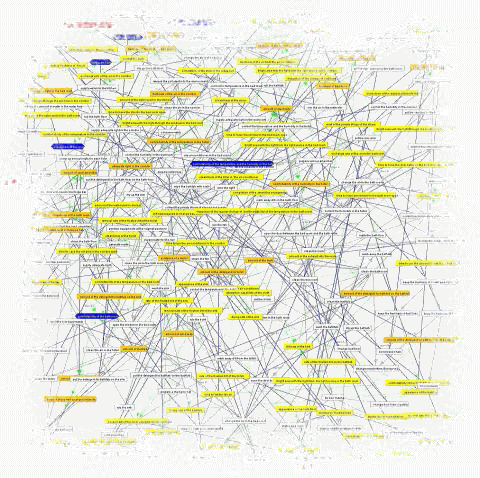

- Prof. Tetsuo TOMIYAMA, who is now in Technical University of Delft, The Nether land,
- Prof. Yoshiki SHIMOMURA, who is now in Tokyo Metropolitan University, and
- Prof. Tamio ARAI, who was a director of RACE from 2000 to 2005 and now
in Dept. of Precision Engineering, The University of Tokyo.
The division "Service Engineering" in RACE is now operated by Professor Hajime ASAMA, who is in charge of service media and supports the novel concept of SERVICE ENGINEERING.
Concept of Service Engineering
To solve current industrial problems, manufactures need to supply service rather than materialized products to consumers. We propose a novel engineering paradigm to deal with services, service engineering. We define services as a state change.
Service Explorer
A service model consists of three sub-models: scope model, view model and flow model. A computer-aided design tool, called Service Explorer, is developed to represent a network of the parameters and determines the influence weight one another.
Background: Saistainable society
We should reduce the production and consumption volume of artifacts to an adequate, manageable size to solve environmental problems although we do not want to make our quality of life lower than now. Consequently, we must aim at qualitative satisfaction rather than quantitative sufficiency, and thus the decoupling of economic growth from material and energy consumption.
Service Engineering is a new paradigm, which is free from the mass-production paradigm of 20th century. To achieve this paradigm, products should have more values, supplied largely by knowledge and service contents, rather than just materialistic values. This dematerialization of products requires the enrichment of service contents. To this end, we need a novel engineering method to evaluate services and to design the services. This novel engineering is called service engineering, which includes design methodology of both products and services. This novel engineering differs in the definition of value from Value Engineering, where value is defined as function over cost. Conventional design methodology also deals with only functions of the object rather than satisfaction of the consumers by the functions.
What is service and a model of service?
 |
Customer's satisfaction is defined as receiver's state change, which is caused by contents of a service. The service is transported with channels. |
| Fig. 1 Definition of a service |
A service is defined as an activity that changes the state of a service receiver. In Figure 1, a provider causes, usually with consideration, a receiver to change from a state to a new state that the receiver desires, where both contents and a channel are means to realize the service. Hence, a service receiver satisfies with just contents, which are any of material, energy, and information. A service channel is used to transfer, amplify, and control the service contents.
In this definition, artifacts can change from contents to channels and vice versa. Artifacts have their own functions, behaviors, and states, and therefore they can be designed with conventional CAD systems. Since both service channels and service contents also have the above-mentioned characteristics, we introduce the similar methodology into the design of services.
The term "service" is defined. Then what is service engineering? It is a design methodology to increase the value of artifacts and to decrease the load to the environment by reasons of focusing service. Note that service engineering has both analytical and synthetic aspects. In this paper, we discuss both. Service engineering aims at intensifying, improving, and automating this whole framework of service creation, service delivery, and service consumption. To increase the total satisfaction of receivers, we can improve functions and/or quality of both channels and contents. Traditionally, engineering design has aimed to improve only function. A better function of a new product, we believed, makes consumers satisfied. In service engineering, however, not only the functions of artifacts but also meaning of contents must be matched to the specifications given by receivers. Then the satisfaction of receivers increases.
- History of Service Engineering
- To study Service Engineering
- Service CAD system: Service Explorer ν
 |
Example of service A service is represented by a network of functions(nodes in yellow). Contents, which are evaluated by receivers, are denoted in blue. |
Links:
| Serve Service Engineering! |